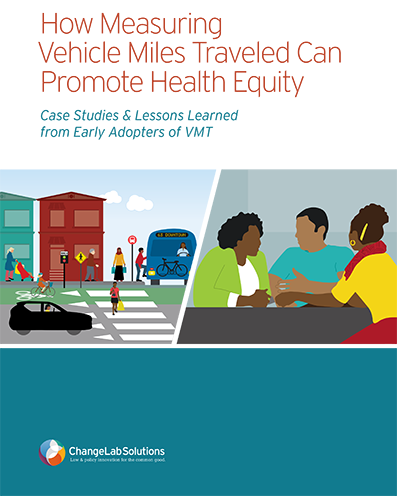How Measuring Vehicle Miles Traveled Can Promote Health Equity
A guide for implementing new transportation planning standards
Our new guide is for transportation planners, engineers, policymakers, and other professionals who want to use their implementation of California’s Senate Bill 743 (SB 743) to improve health equity in their region. Public health practitioners, community groups, transportation advocates, and other stakeholders can also use this resource to facilitate collaboration with local government officials.
Passage of SB 743 means that local governments in California must soon begin using vehicle miles traveled (VMT) as the metric in CEQA analyses that measure the impact of transportation projects on the environment. For analyses mandated by the California Environmental Quality Act (CEQA), this change will take effect on July 1, 2020.
Data and analysis play a crucial role in determining the health, equity, and sustainability of communities. Planning and transportation measurements shape whether built environments are safe and beneficial to health or focused on other priorities like promoting automobile transportation. The transition from car-oriented level-of-service (LOS) metrics to VMT indicators presents an opportunity to advance analytical methods that will help create healthier, more equitable communities.
For many California cities and counties, making the transition from LOS to VMT will require local governments to shift their existing methods for analyzing transportation impacts; adopt new policies; and provide education or retraining to staff. How Measuring Vehicle Miles Traveled Can Promote Health Equity contains case studies from 5 California cities that have already made the jump to VMT, highlighting best practices and challenges in the implementation process as well as stakeholder and community engagement.



